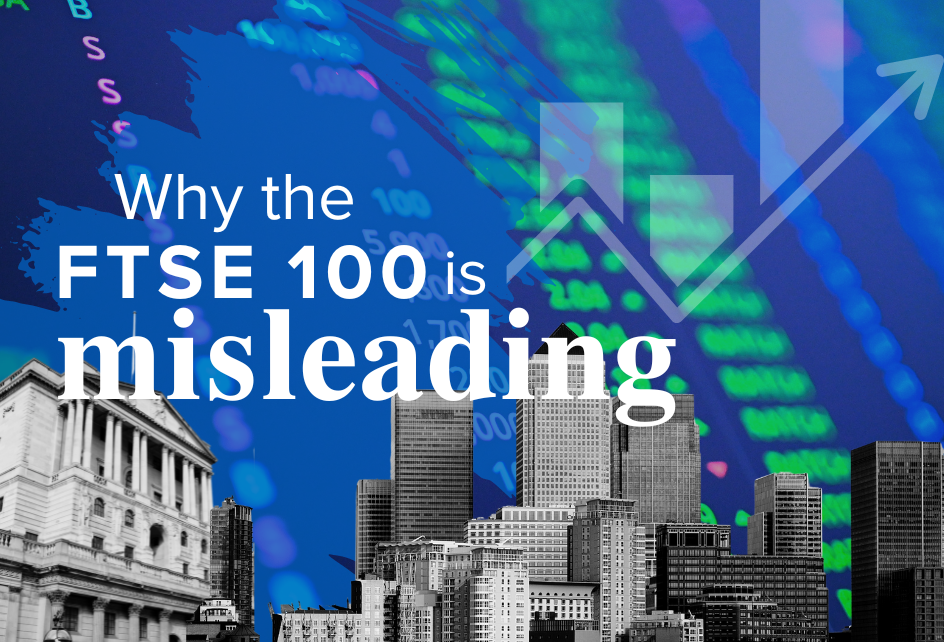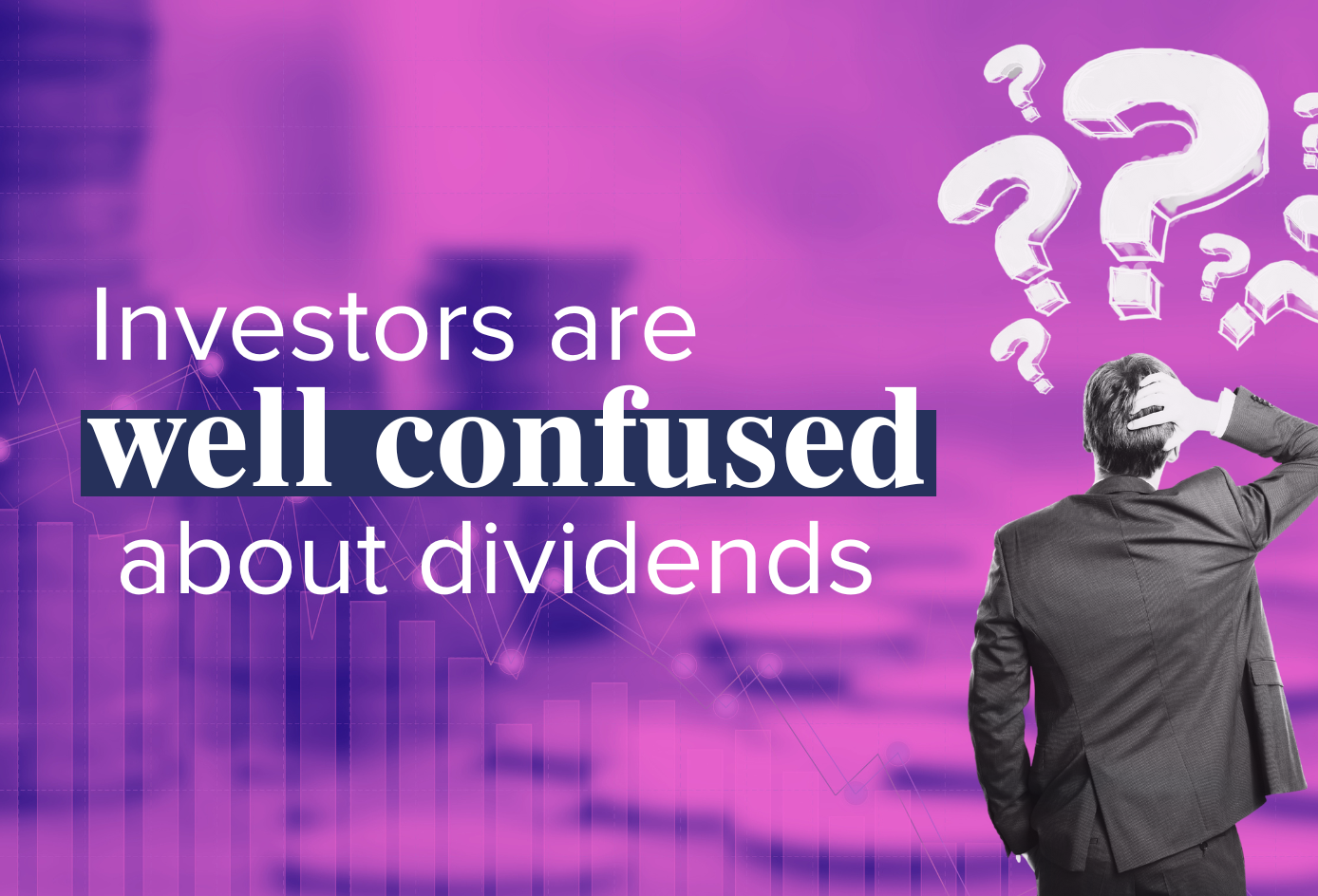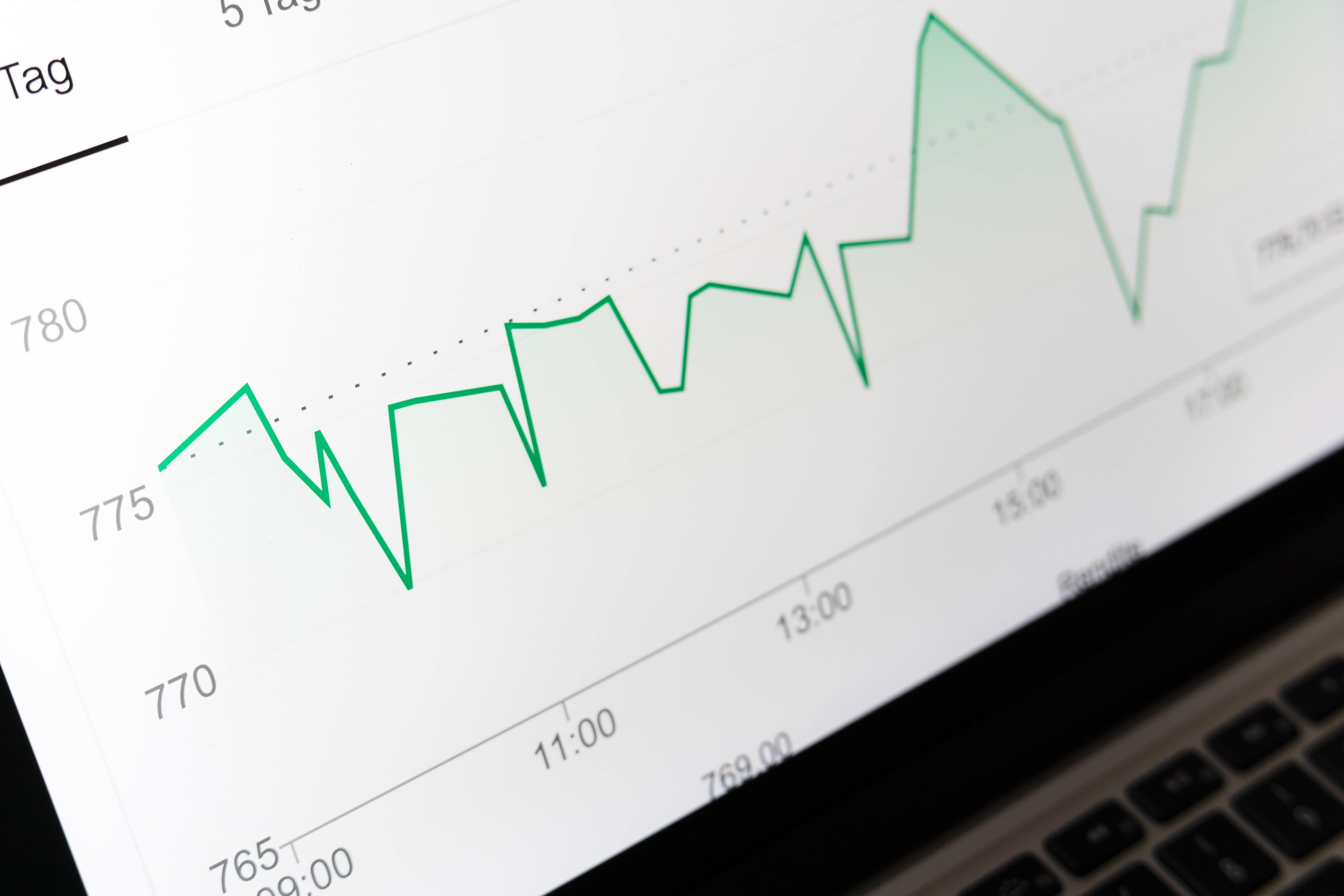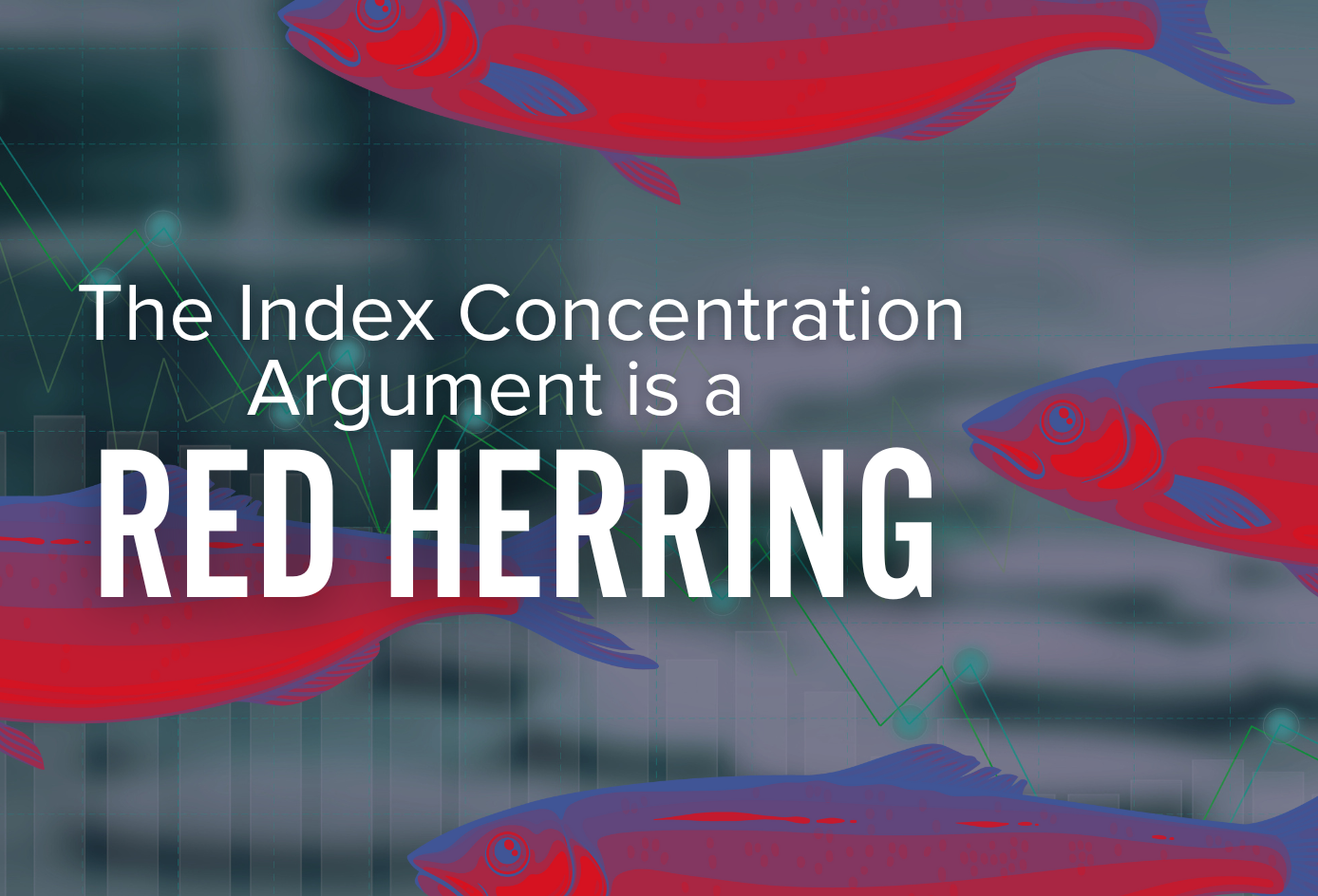For investors who are prepared to ride out volatility and focus on the long term, the evidence of market history tells us, categorically, that they should primarily invest in equities. But, as survey after survey shows, most people in the UK have far too little invested in shares relative to cash savings. Compared to other nations, Britons also have a much higher average exposure to residential property.
Why, then, are people so reluctant to invest in equities? One reason, I would suggest, is the FTSE 100 index. Although, as a share of the global market, the FTSE 100 is very small, it is nevertheless seen as a bellwether for equity returns. We are also constantly reminded of it by regular updates in the media on the level the index is at.
For most of my investing life, the FTSE 100 seems to have hovered at around 6,000 or 7,000. Indeed it first broke through the 6,000 mark on 30th April 1998. At the time of writing, the index is currently around 7,700. On the face of it, that seems a rather unimpressive return over almost 26 years.
But are we seeing the full picture?
The FTSE 100 ignores dividends
In common with almost all of the major market indices around the world, the FTSE 100 is a price-only index. The price reflects the change in the market price of the index since inception. It is calculated by comparing the current price of the index to its price when the index launched. Crucially, it does not take into account the dividends generated by the companies that make up the index.
As Wall Street Journal columnist James Mackintosh recently explained, dividends are a crucial component of investment returns. "Dividends are vital,” he wrote. (1) “Over the long run, the compounding effect of reinvesting dividends makes a huge difference to returns. In the past half-century, U.S. stocks turned $100 into $6,200 without dividends (ignoring costs and taxes) while with dividends they would be worth $25,000.”
In other words, price returns give a very misleading impression of the returns investors in a particular index have received. For a comprehensive picture, you need to look at total returns. The total return of a stock market index accounts for both the capital gains, or price appreciation, and any dividends received from the constituents of the index. In other words, the total return reflects the actual yield of an index over time.
Germany and Brazil are exceptions
The bad news is that almost all of the major market indices around the world are price-only indices. There are just two exceptions — the DAX in Germany and the BOVESPA in Brazil which are both total return indices (in Germany it’s called the Leistungindex, or performance index). The good news is that, in most countries, investors have access to both price returns and total returns of their major stock index.
Take Australia’s S&P/ASX 200, for example. As you can see from the S&P Dow Jones Indices website, the total return of the ASX 200 is currently around 98,000 — more than 12 times the current price return. (2) Over the last 12 months, the price return is around 6.2 percent, but the total return is about 10.7 percent. Huge though the difference between those two figures is, it’s not exceptional. Over the last ten years, 42% of the return of the ASX 200 has come from dividends.
It’s a similar story elsewhere. The S&P 500 in the United States is currently at around 5,100. But, based on an inception date of 1970, the total return would be somewhere around 31,000. The Dow Jones Industrial Average is around 38,600, but the total return is nearer 96,000.
What has the FTSE returned in total?
So what about the FTSE 100? What has our best-known index returned in total, once dividends are factored in?
Mark Hebner, founder of Index Fund Advisors in California, who recently launched a petition calling on financial media outlets around the world to start quoting total return index values, has run the numbers on the FTSE 100. (3) “For comparative purposes,” says Hebner, “we took the closing index value of the FTSE 100 price return index as of the same inception date of the FTSE 100 total return Index — 1st January 1986 — and then grew the FTSE 100 price return index by the annualized return of the FTSE 100 total return index, ending on 29th February 2024. The price return was 7,629, but the total return was 32,477.”
The difference between those figures, clearly, is huge, and, Hebner argues, the larger figure is by far the more meaningful of the two. “We would all be better off,” he says, “if we focused on total return instead of price return, or what I like to call partial return, says Hebner. “But that is hard to do when virtually all financial media reports price-only return indices.”
US academics Samuel Hartzmark and David Solomon, the joint authors of a 2017 paper, updated in 2020, called Reconsidering Returns, agree. In the paper, they wrote: “We defy readers to come up with an economic application for which the S&P 500 pricing index is the correct metric.” (4)
Are you looking at the wrong number?
Interviewed in October on the Canadian investing podcast Rational Reminder, Professor Hartzmark said media organisations only refer to the price return “because that's how we've always done it”. (5)
“What is the media coverage reflecting?” he said. “Is it reflecting the actual market performance, the total return? Or (are they) looking at the number that's blaring right out in front of them?.. (They’re) looking at the wrong number.”
So, don’t be misled by the headline value of the FTSE 100. The total return for investors has been far greater than the price return alone. Surely it’s time that countries like the UK followed the lead of Germany and Brazil and began quoting total returns instead.
This article is produced by us for Financial Advisers who may choose to share it with their clients. Timeline Planning and Timeline Portfolios do not offer direct-to-consumer products.
Robin Powell is a journalist, author and editor of The Evidence-Based Investor.
References:
- https://www.wsj.com/finance/stocks/lessons-from-a-three-decade-long-stock-market-disaster-5a0b5435
- https://www.spglobal.com/spdji/en/indices/equity/sp-asx-200/#overview
- https://www.ifa.com/petition
- https://www.ifa.com/external.aspx?url=https://www.nber.org/system/files/working_papers/w27380/w27380.pdf
- https://rationalreminder.ca/podcast/273



